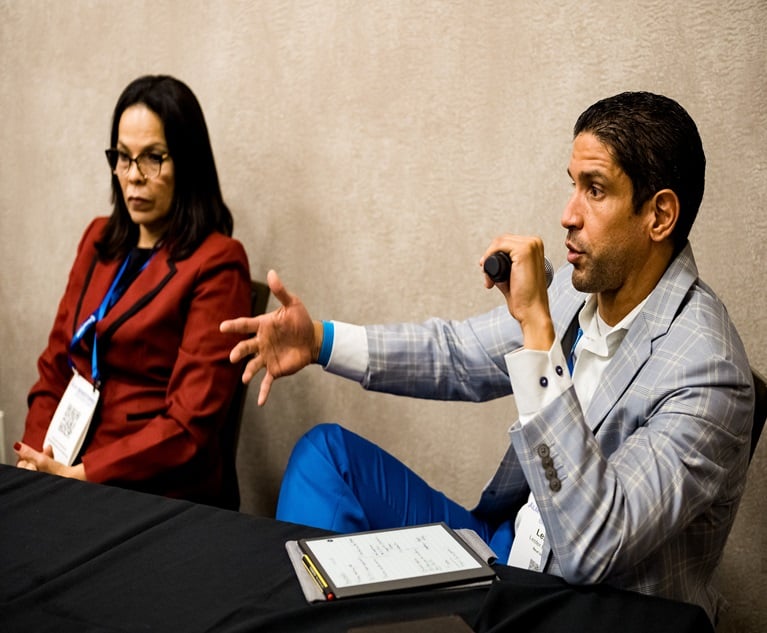Of course, you have to market to your clients. But to whatend?
|Start with this fact: there is no such thing as 100 percentclient retention.
|Three reasons they leave are poor advice, bad service, and poorcommunications from their advisor. My Client Relationship Retention Formula was built tohandle these three issues.
|People die, move away, divorce. Some leave because “It's not agood fit.”
|But there are some other issues that influence retention you nowneed to take into account.
|Overall retention rates
You must prospect some or you have a dyingbusiness. There is no such thing as “being done.” But the betterjob you do with client retention, the less you have toprospect.
|You should read “Stay or Stray: Putting Some Numbers Behind ClientRetention,” a study by the Canadian practice managementsoftware firm PriceMetrix. According to their website, they“collect and analyze wealth management data to improve the businessperformance of wealth management firms and their financial advisorswhile creating a better client experience.”
|I found the “Stay or Stray” white paper looking for somethingelse. How I missed it earlier I have no clue.
|Retention rates: What to expect
Let's first take a look at overall retention rates. According tothe report, “the median advisor in 2013 retained 94 percent ofhouseholds. The advisor at the 10th percentile retained only 84percent of clients, while the advisor at the 90th percentileretained 98 percent.”
|If you are exactly at the median and have 300 clients, you lost18 households in 2013. But if you are at the 90th percentile, youlost six. At median level, you would have to have major prospectinggoing on just to stay even.
|Related: 8 ways to build extreme clientloyalty
|What if 2016 turns into 2008? According to the PriceMetrixstudy, “While the top half and median rates of attrition were inline with historical norms, many advisors had retention rates belowhistorical norms. The bottom 10 percent of advisors lost nearly onein five of their client relationships in 2009.”
|For a long time, I have recommended that before an establishedFA launch a prospecting campaign, put systems in place tostrengthen client retention.
|Close the barn door before you go out and rustle some of yourneighbor's cattle.
||
The probability of retaining a client in the first year ishigh. There's a 'honeymoon' period in advisor/client relationships!(Photo: Shutterstock)
|Vulnerable clients
One of the most fascinating conclusions of the PriceMetrix studyis what I would call a “vulnerability window.”
|“Our analysis indicates that the conditional probability ofretention at first decreases only slowly. The probability ofretaining a client in the first year is high (0.95 at 12 months).There is a 'honeymoon' period in advisor/client relationships! Theprobability of retention decreases between 12 and 48 months — from0.95 to 0.74.
|It appears that it is during this time clients determine whetherthe advisor relationship meets their needs, and if not, they decideto leave. Around the 48-month mark, retention tends to stabilize,with the probability of retention decreasing from 0.74 at 48 monthsto 0.70 at 60 months… This suggests that clients who have remainedwith their advisor for five years have by this time elected toremain for the long term.”
|This suggests a strategy, doesn't it? At a very minimum, itsays:
Arrange your database so you can see clients who came on in thecurrent year (Year 1) and through Year 2, Year 3, Year 4 and Year5+.
Focus retention marketing on clients in Year 4, then Year 3,then Year 2, Year 1, then 5+.
Assets and retention
Here's another key finding: “The data reveal that, as householdassets increase, the probability of retention increases. Householdswith less than $250,000 in assets are notably less likely to remainwith their financial advisor than those with greater assets.”
|More strategy: (1) Absolutely pursue new clients with more than$250,000. (2) Become sole provider for all clients. (Hint: some ofyour little accounts are big accounts somewhere else.)
|In my view: if a client asks you to help his nephew who has$25,000, should you do it?
|Absolutely. Refuse a referral to a small account and you willlikely not get a referral to the next one, Uncle Harvey whorecently sold “Harvey's Plumbing Supply” for $6 million.
|Related: How to strategically monitor you book ofbusiness
|“Stay or Stray” posts this caution: “Advisors should thereforebe mindful of the time and resources they devote to small clientsgiven their reduced likelihood of staying. More importantly,advisors should recognize the often imperceptible damage that smallclients can cause to relationships with larger clients.”
|The implication of this is: off-load small clients.
|I have ranted against this “book pruning” notion since 1990.It's advocated by almost all gurus and consultants and embraced byall the major firms. It is based on the 80–20 “ParetoPrinciple.”
|Even if Pareto is a sound economic principle and you shouldthrow small clients off the bus — and I have anecdotal evidenceagainst this — I would still rail against it.
|I think it is unethical to kick someone out who gave you his orher trust, perhaps even helped you come to the party. I think it isbad for the industry. Book pruning generates tremendous ill will.No one wants to be sent to a call center. Finally, you can manage alarge book of small clients if you get a junior advisor.
||
The better job you do with client retention, the lessyou have to prospect. (Photo: iStock)
|Deeper relationships
The PriceMetrix study states: “Our analysis also revealed — notsurprisingly — that clients with deeper relationships with theiradvisor are more likely to be retained; those with thinnerrelationships are less likely to be retained.”
|Related: Customer loyalty begins with the insurance salesprocess
|In thinking this through, I think there is a strong possibilitythat number of accounts is an objective measure of an obviouslysubjective relationship: “depth.” How strong is yourrelationship?
|What we are measuring here is, I believe, trust. The deeper therelationship, the greater the trust, the more willing the client isto put all his or her eggs in one basket.
|The strategy then becomes: get as many accounts open as soon aspossible.
|If you have not started doing that yet, start with clients whobecame clients four years ago. They would appear to be mostvulnerable.
|Marketing objective
According to me, the objective, purpose, mission, call it whatyou will of client marketing is: become or remain sole providerfor all clients who are decent people and follow advice.
|Of course you want to deal with pleasant people who do what youtell them. Who wants to struggle all day with sour, unpleasantpeople who argue instead of taking your advice?
|Of course you want all the assets. You won't rest easy knowingyour biggest client, Velda Oldebucks, is having her hand held by“that nice young woman at the bank.” And your heart certainly skipsa beat when another big client, Bob Barking, tells you he bought100 bonds from a pleasant young man atMerrillMorganUBSWellsPartners.
|You want all the assets and you want to keep the clientforever.
|Ultimately, this means if the client's stupid brother-in-lawWayne says, “Kelly, I think we should put some money in a newfranchise, Lifetime Tanning and Body Sculpting. What do you think?”Kelly replies, “Sounds interesting. I'll check with Mel first” (Melbeing you, of course).
|I have been encouraging clients to strive for “soleprovidership” for a long time.
|You can do far worse than start with the clients in Year 4 and“Find all outside assets held by the client so they can be moved toFA management.”
|The PriceMetrix study said it more scientifically: “whenadvisors (often correctly) surmise that they have only a share of aclient's investable assets, they should endeavor to increase theirshare, since doing so improves the prospect of retaining thatclient.”
|Related: Customer relationships are more important thanever; here's proof
|Bill Good is chairman of Bill GoodMarketing. His Gorilla CRM System helps advisors double theirproduction. Contact him at (800) 678-1480.
Want to continue reading?
Become a Free PropertyCasualty360 Digital Reader
Your access to unlimited PropertyCasualty360 content isn’t changing.
Once you are an ALM digital member, you’ll receive:
- All PropertyCasualty360.com news coverage, best practices, and in-depth analysis.
- Educational webcasts, resources from industry leaders, and informative newsletters.
- Other award-winning websites including BenefitsPRO.com and ThinkAdvisor.com.
Already have an account? Sign In
© 2024 ALM Global, LLC, All Rights Reserved. Request academic re-use from www.copyright.com. All other uses, submit a request to [email protected]. For more information visit Asset & Logo Licensing.








